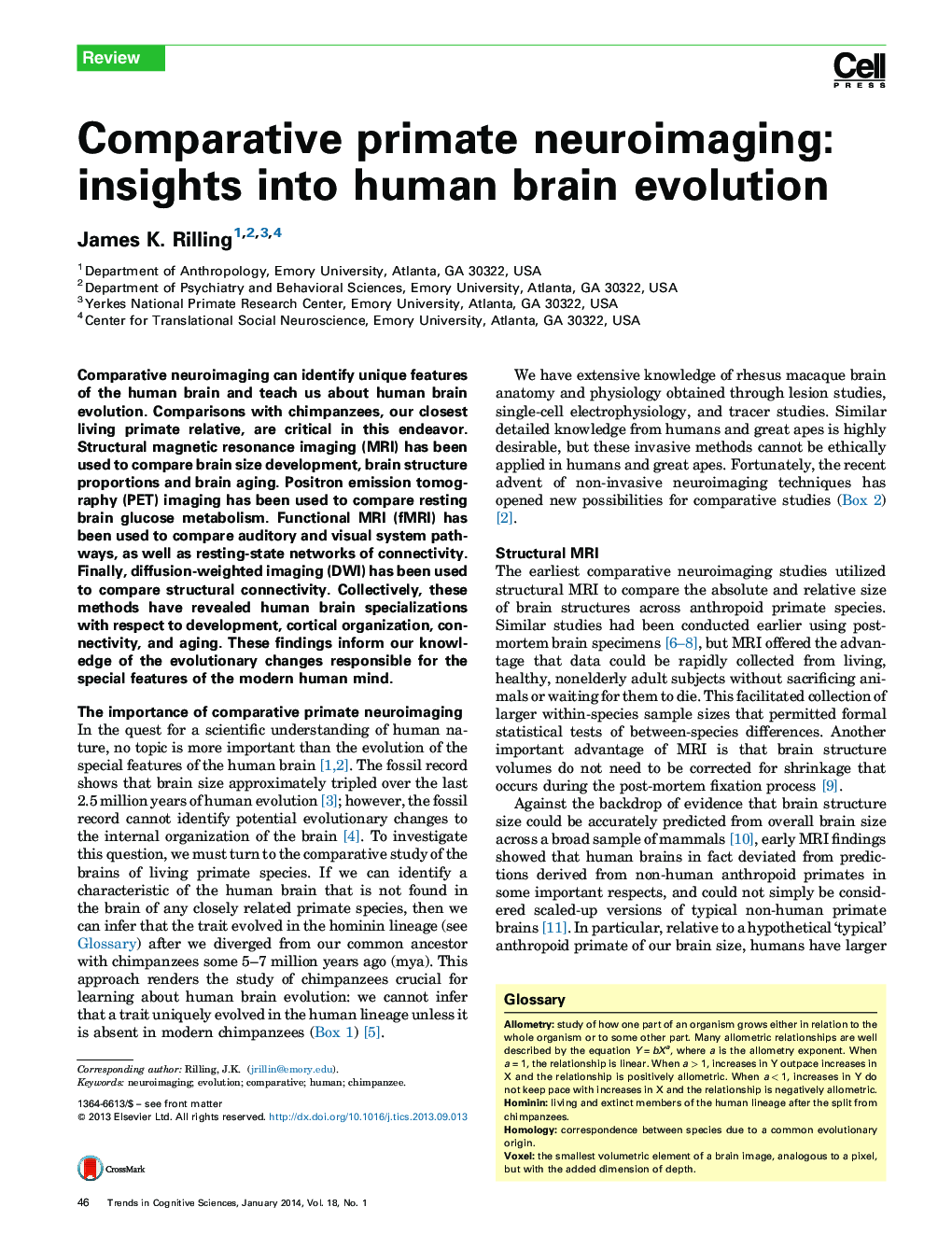| Article ID | Journal | Published Year | Pages | File Type |
|---|---|---|---|---|
| 141445 | Trends in Cognitive Sciences | 2014 | 10 Pages |
•Comparative neuroimaging can identify unique features of the human brain.•Comparisons with chimpanzees are crucial for learning about human brain evolution.•Human brains are special in terms of size, cortical organization, and connectivity.•Human brains are special in terms of development and aging.
Comparative neuroimaging can identify unique features of the human brain and teach us about human brain evolution. Comparisons with chimpanzees, our closest living primate relative, are critical in this endeavor. Structural magnetic resonance imaging (MRI) has been used to compare brain size development, brain structure proportions and brain aging. Positron emission tomography (PET) imaging has been used to compare resting brain glucose metabolism. Functional MRI (fMRI) has been used to compare auditory and visual system pathways, as well as resting-state networks of connectivity. Finally, diffusion-weighted imaging (DWI) has been used to compare structural connectivity. Collectively, these methods have revealed human brain specializations with respect to development, cortical organization, connectivity, and aging. These findings inform our knowledge of the evolutionary changes responsible for the special features of the modern human mind.
